What Animal Does Pork Chops Come From
Before you shop for pork, information technology's helpful to empathise some basic data besides as the cardinal cuts from which the retail cuts are butchered. Ownership and cooking today'south lean pork chops or tenderloins tin be a challenge. And in addition, in that location are many cuts of pork in the market, many of which are sold under a variety of alternate names. Pork labels can also be disruptive. Our retail cuts chart volition help you lot empathize shopping for pork, cut past cutting.
Primal Cuts of Pork
Four different cuts of pork are sold at the wholesale level. From this offset series of cuts, known in the trade as primal cuts, a butcher (unremarkably at a meatpacking plant in the Midwest merely sometimes on-site at your market) volition brand the retail cuts that you bring home from the market.

Shoulder: Cuts from the upper portion of the shoulder (called the blade shoulder) are well marbled with fat and comprise a lot of connective tissue, making them platonic candidates for slow-cooking methods like braising, stewing, or barbecuing. Cuts from the arm, or picnic shoulder, are a bit more than economical than those from the blade area simply are otherwise quite similar.
Loin: The area between the shoulder and back legs is the leanest, most tender role of the animal. Rib and loin chops are cutting from this expanse, as are pork loin roasts and tenderloin roasts. These cuts volition be dry if overcooked.
Leg: The rear legs are often referred to every bit "ham." This key cut is sold equally big roasts and is bachelor fresh or cured.
Side/Belly: The underside is the fattiest part of the animate being and is the source of bacon and spareribs.
Shopping for Pork—Cutting by Cut
Not all roasts, chops, and ribs are created alike. Nosotros've rated the following cuts on flavor (★★★★ being the well-nigh flavorful) and cost ($ $ $ $ being the virtually expensive).
PRIMAL CUT: SHOULDER
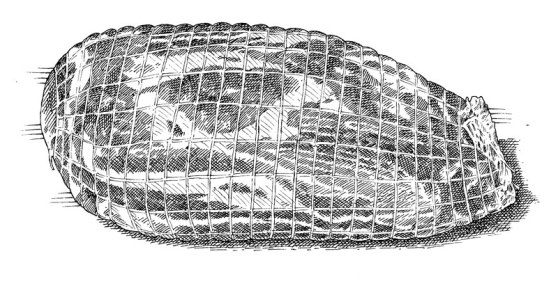
Pork Butt Roast: This big, flavorful cutting (often labeled Boston butt or pork shoulder at markets) tin weigh as much as eight pounds when sold with the bone in. Many markets take out the os and sell this cut in smaller chunks, often wrapped in netting to hold the roast together.
Flavor: ★★★★
Cost: $ $
Alternate Names: Boston shoulder, pork butt, Boston butt
Best Cooking Methods: Slow roasting, barbecuing, stewing, braising

Pork Shoulder: This affordable cut can be sold bone-in or boneless. It is rich in fat and connective tissue.
Flavor: ★★★★
Cost: $
Alternate Names: Shoulder arm picnic, picnic shoulder, fresh picnic, picnic roast
Best Cooking Methods: Grill roasting, barbecuing, roasting, braising
Key CUT: LOIN
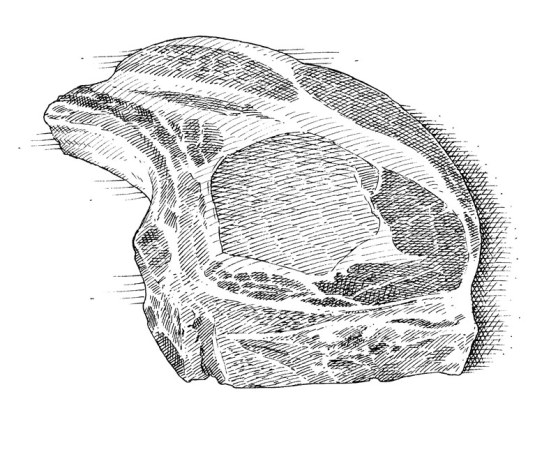
Blade Chop: Cutting from the shoulder end of the loin, these chops can be difficult to find at the market. They are fatty and tough, despite skilful flavour and juiciness.
Flavor: ★★★
Price: $ $ $
Alternate Proper name: Pork chop end cutting
Best Cooking Methods: Braising, barbecuing
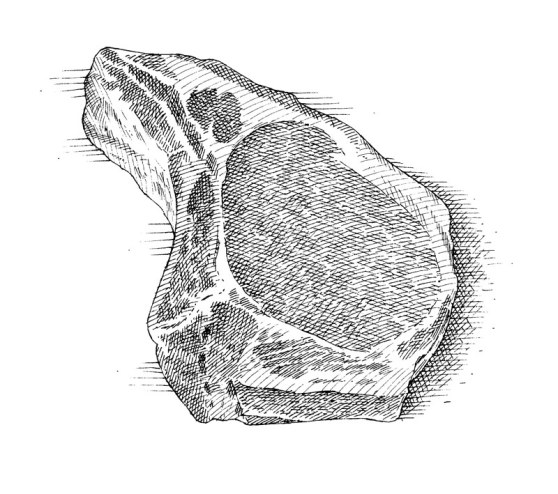
Rib Chop: Cut from the rib department of the loin, these chops have a relatively high fat content, rendering them flavorful and unlikely to dry out during cooking. They are a favorite in the exam kitchen. These chops are easily identified by the bone that runs along 1 side and the ane large eye of loin muscle. Note that rib chops are too sold boneless. In fact, virtually boneless pork chops you'll find are cutting from the rib chop.
Flavor: ★★★
Toll: $ $ $
Alternate Names: Rib cut chops, pork chops end cutting
Best Cooking Methods: Grilling, pan searing, braising

Middle-Cut Chop: These chops can exist identified by the os that divides the loin meat from the tenderloin muscle. The lean tenderloin section cooks more than quickly than the loin section, making these chops a challenge. They have good season, but since they contain less fat than the rib chops, they are non quite every bit moist.
Flavor: ★★
Cost: $ $ $ $
Alternate Names: Top loin chops, loin chops
All-time Cooking Methods: Searing, grilling

Sirloin Chops: These chops, cut from the sirloin, or hip, end of the pig, are tough, dry, and tasteless. The chops contain tenderloin and loin meat, plus a piece of hipbone. Nosotros exercise not recommend this cut.
Flavor: (no stars)
Cost: $ $ $
Alternating Proper name: Sirloin steaks
All-time Cooking Method: None

Infant Back Ribs: Baby back ribs are cut from the section of the rib cage closest to the backbone. Loin centre-cut roasts and chops come from the same function of the pig, which explains why baby dorsum ribs can exist expensive. This location likewise explains why infant back ribs are much leaner than spareribs—and why they need special attention to keep from drying out on the grill.
Flavor: ★★★
Price: $ $ $ $
Alternating Names: Loin back ribs, riblets
Best Cooking Methods: Grilling, barbecuing

State-Manner Ribs: These meaty, tender, boneless ribs are cut from the upper side of the rib cage from the fatty blade end of the loin. Butchers usually cutting them into individual ribs and package several ribs together. These ribs can be braised and shredded for pasta sauce, or pounded flat and grilled or pan-seared as cutlets.
Flavor: ★★★
Cost: $ $ $
Alternating Name: Country ribs
All-time Cooking Methods: Braising, grilling, pan searing
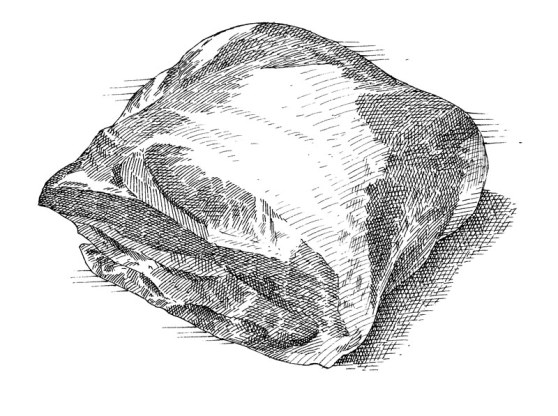
Blade-Stop Roast: The part of the loin closest to the shoulder, the os-in bract roast can be chewy. Information technology can also be difficult to carve considering of its many split up muscles and fat pockets. Likewise sold boneless (meet beneath).
Season: ★★★
Toll: $ $
Alternate Names: Pork seven-rib roast, pork 5-rib roast, pork loin rib stop, rib-end roast
All-time Cooking Method: Roasting

Boneless Blade-finish Roast: This is our favorite boneless roast for roasting. Information technology is cutting from the shoulder end of the loin and has more fat (and flavor) than the boneless center-cutting loin roast. Unfortunately, this cut can exist hard to find in many markets. This roast is also sold with the os in, although that cut is fifty-fifty harder to locate.
Flavour: ★★★
Cost: $ $
Alternate Names: Blade roast, blade loin roast
Best Cooking Methods: Roasting, grill roasting
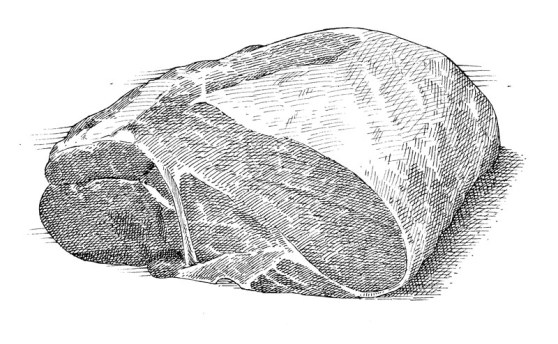
Center-Cutting Loin Roast: This popular boneless roast is juicy, tender, and evenly shaped with somewhat less fat than the center-cutting rib roast. We prefer the more flavorful boneless blade-cease roast, but the two cuts tin exist used interchangeably. Make certain to buy a center-cut roast with a decent fat cap on top.
Flavor: ★★
Cost: $ $ $
Alternate Proper name: Center-cut pork roast
Best Cooking Methods: Roasting, grill roasting

Middle-Cut Rib Roast: Often referred to as the pork equivalent of prime rib or rack of lamb, this mild, fairly lean roast consists of a single muscle with a protective fat cap. It may be cutting with anywhere from five to eight ribs. Considering the bones (and nearby fat) are still attached, we notice this roast a better selection than the center-cut loin roast, which is cut from the same muscle only is minus the bones and fat.
Season: ★★★
Cost: $ $ $
Alternate Names: Rack of pork, pork loin rib half, center-cut pork roast
All-time Cooking Methods: Roasting, grill roasting

Tenderloin Roast: This lean, fragile, boneless roast cooks very chop-chop because it's so modest, usually weighing just about 1 pound. Since there is very trivial marbling, this roast (which is equivalent to beef tenderloin) cannot be overcooked without ruining its texture. Tenderloins are oftentimes sold two to a bundle. Many tenderloins sold in the supermarket are enhanced; look for i that has no ingredients other than pork on the characterization.
Flavor: ★
Cost: $ $ $
Alternate Name: None
Best Cooking Methods: Roasting, pan searing, sautéing, stir-frying
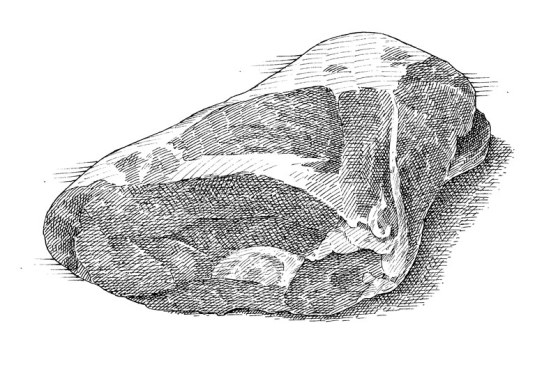
Sirloin Roast: This sinuous cut with a good corporeality of connective tissue is hard to melt evenly and to carve.
Flavor: (no stars)
Cost: $ $ $
Alternate Proper noun: None
Best Cooking Method: None
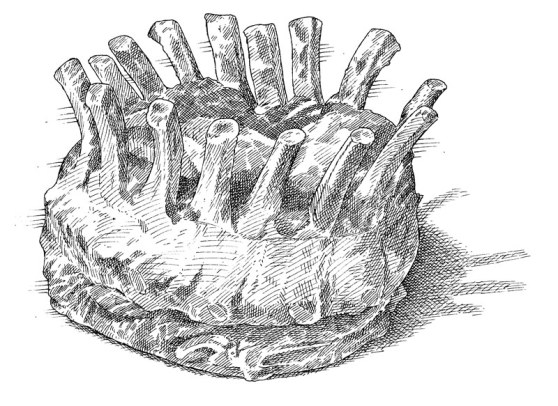
Crown Roast: Butchers tie two bone-in center-cut rib or centre-cut loin roasts together to create this impressive-looking roast. We find that a crown roast with 16 to xx ribs is the best choice, equally smaller and larger roasts are harder to melt evenly. Because of its shape and size, this roast is prone to overcooking.
Flavour: ★★
Cost: $ $ $
Alternate Proper noun: Crown rib roast
All-time Cooking Method: Roasting
Fundamental CUT: SIDE/BELLY
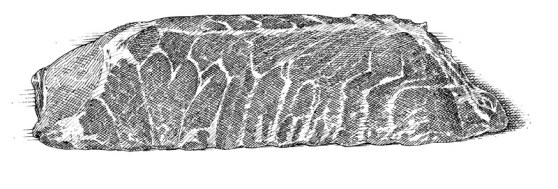
St. Louis–Fashion Spareribs: Regular spareribs are cutting close to the belly of the pig (which is too where bacon comes from). Because whole spareribs contain the brisket bone and surrounding meat, each rack can weigh upward of 5 pounds. Some racks of spareribs are and so large they barely fit on the grill. We adopt this more than manageable cutting because the brisket bone and surrounding meat are trimmed off to produce a narrower, rectangular rack that usually weighs in at a relatively svelte three pounds.
Season: ★★★★
Cost: $ $ $
Alternate Proper noun: Spareribs
All-time Cooking Methods: Roasting, barbecuing
PRIMAL Cut: LEG
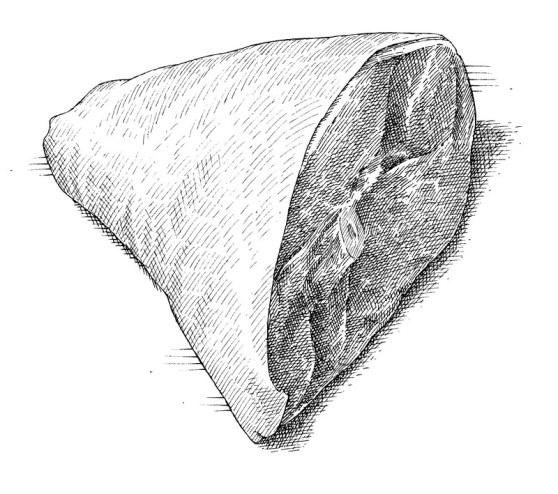
Fresh Ham, Shank End: The leg is divided into 2 cuts—the tapered shank end and the more rounded sirloin end. The sirloin cease has a lot of bones that brand carving catchy. We prefer the shank end. This cut is usually covered in a thick layer of fat and pare, which should exist scored before roasting. This cut is not as fatty as you might call up and benefits from brining.
Flavor: ★★★
Cost: $ $
Alternate Name: Shank end fresh ham
Best Cooking Methods: Roasting, grill roasting

Fresh Ham, Sirloin One-half: Considering of its bone structure, the rounded sirloin is more than difficult to cleave than the shank end and is our 2nd selection. Its flavour, nevertheless, is quite good.
Flavor: ★★★
Toll: $ $
Alternate Name: None
Best Cooking Method: Roasting

Screw-Sliced Bone-In Half Ham: This is our favorite wet-cured ham because the meat is not pumped up with water (the label should read "ham with natural juices") and because it is so easy to cleave. Make sure to buy a bone-in ham; it will taste better than a boneless ham. Although packages are not labeled as such, expect for a ham from the shank rather than from the sirloin finish. You can pick out the shank ham by its tapered, more than pointed end opposite the flat cut side of the ham. The sirloin ham has more rounded or edgeless ends.
Flavor: ★★★★
Cost: $
Alternate Name: Screw-cut ham
All-time Cooking Method: Roasting

Country Ham: This Southern favorite starts with the whole leg and is dry-cured like prosciutto or serrano ham. This ham has a circuitous, meaty, and nutty flavor. The meat is very salty and dry (even after soaking). Serve it in small pieces with biscuits or use in recipes with greens, rice, or pasta.
Flavour: ★★★
Toll: $ $ $
Alternating Proper noun: None
Best Cooking Method: Roasting
➜ This content is excerpted from the Pork affiliate from The Cook'southward Illustrated Meat Book. Encounter more inside the book.
Source: https://cimeatbook.com/pork-cuts-a-visual-guide/
Posted by: taylorduress.blogspot.com

0 Response to "What Animal Does Pork Chops Come From"
Post a Comment